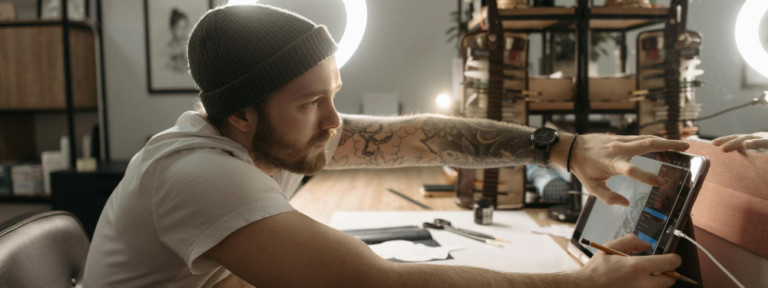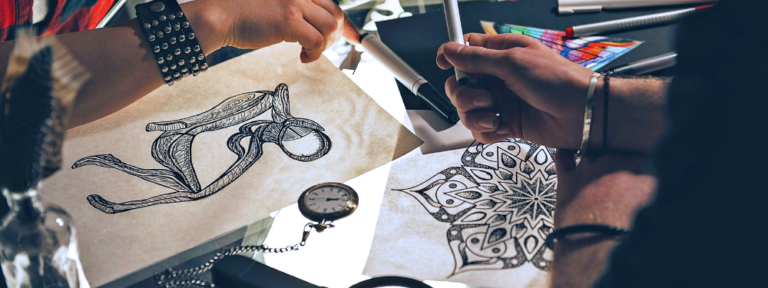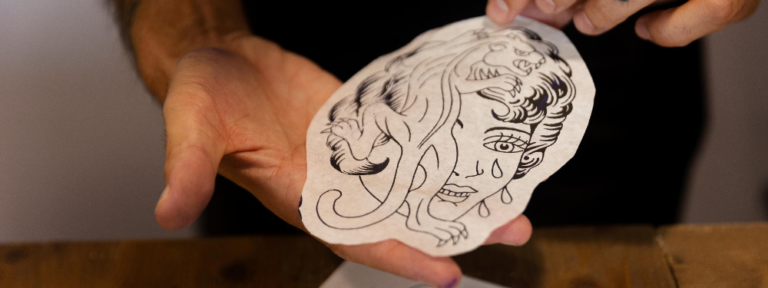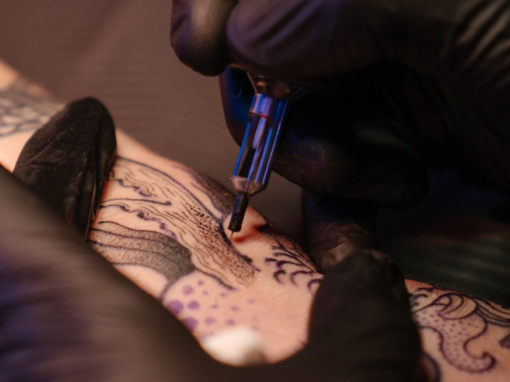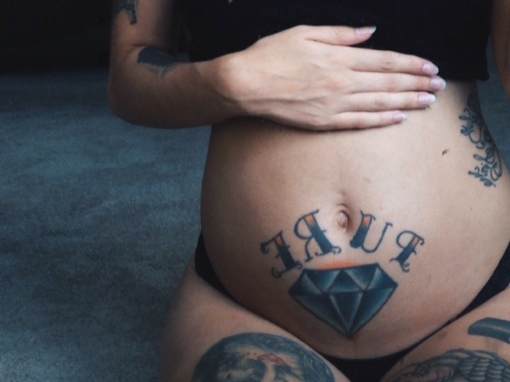To determine how long you need to keep a tattoo in the wrapper, first, you need to understand its main function, what types of the wrap can be, and what role it plays in the speedy healing of your body art.
In this article, we will answer all sorts of questions regarding the wrapping process and tell you about the pros and cons of different wrappers. Also, we let you know if the wrapper can be kept for too long, whether it is worth wearing it overnight, and should you re-wrap the bandage by yourself or not. Happy reading, tattoo lover!
What Is the Tattoo Wrap?

The tattoo wrap is the material that covers the newly made tattoo to prevent infection and bacteria from entering the fresh ink. It also protects the tattoo against any knocks and other impacts.
Once your design is finished, the artisan should sanitize the body art to make sure it is clean and sterile. This can be done with a mild soap or antibacterial ointment. Next, the tattoo artist must wrap the picture with one of the allowed materials, depending on the personal preferences of the artist or client. This step begins the healing phase of your tattoo. For the skin to be clean, and the picture beautiful and clear, the wrap must act as a barrier against any bacteria.
Top Artists


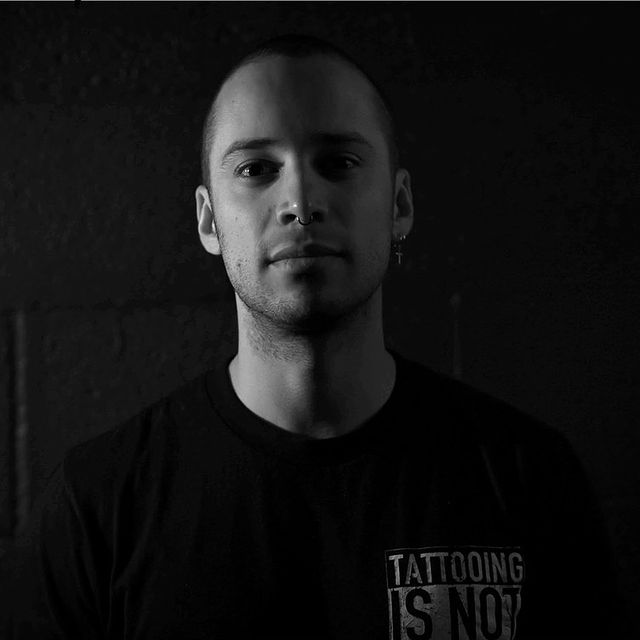



How Long Should I Keep My Tattoo Wrapped?
If you came here for a short answer, then get it: after you leave the salon or your tattoo artist, you need to keep the tattoo wrapped for 2-4 hours if you use simple cling wrap (plastic foil). If you have a protective tattoo film, then keep it for 3-5 days.
And now a little more detail. Tattoo wrapping is a necessary step in the proper care of our picture. It is important to know when and for how long to cover the tattoo.
For some reason, it is precisely on the issue of wrapping time that the opinions of the masters often differ. Some of the artists claim that you can remove the bandage if you immediately come home after the salon and rinse the tattoo with warm soapy water, and then use a moisturizing agent — cream, balm, gel, etc. A suitable product will reduce dryness and accelerate healing. Although, this is only in a case where you are not going to go to public places and directly contact microbes.
Most of the tattoo artists still advise to wait at least a couple of hours before removing the wrap. It is important to do this so that the skin calms down and the blood diverges around the perimeter of the tattoo, without creating swelling. In any case, be sure to consult with your master about the time to wrap, listen to him, and keep in touch.
All You Need To Know About the Wrapping Process
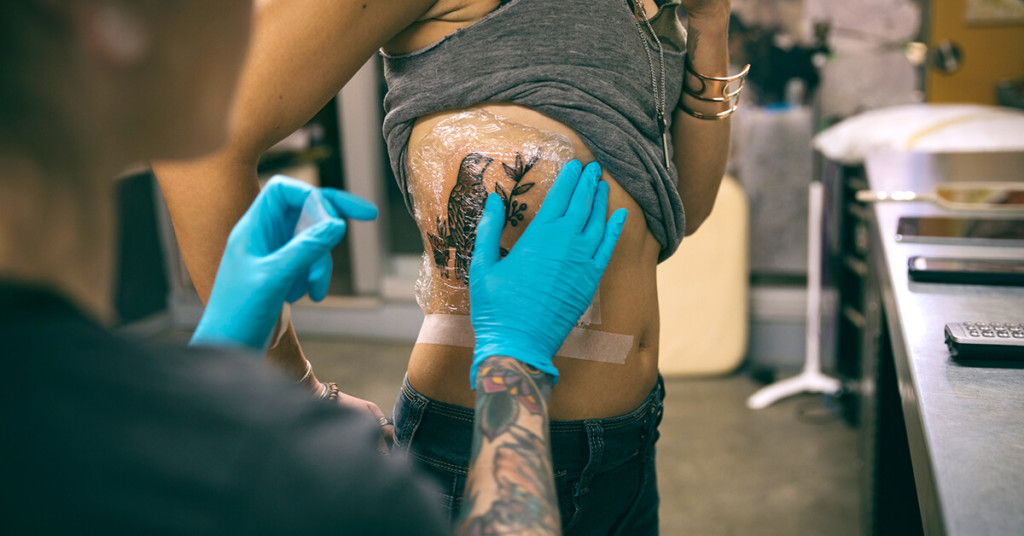
The wrapping takes place immediately after the tattoo artist has finished applying the desired pattern to the skin. This process has two stages.
1. First of all, the master disinfects the tattooed area with an antibacterial cleanser or mild soap.
2. The next step is body wrapping. When the skin becomes sterile, the tattooist waits for it to dry and wraps the needed area with professional tattoo film (which is highly recommended) or simply plastic foil.
💤 Should I Wrap the Tattoo at Night?
It is common for the tattoo artist to ask you to keep the tattoo wrapped up the first night to protect the wound until a fresh layer of new skin appears in this place. This is especially important if you have a tattoo in a location that will come into contact with the sheets. To avoid unnecessary friction and adhesion it is better to play it safe and wrap the tattoo for the night.
In any case, if you have some questions and concerns, always consult with your master and listen to him.
🔄 Can I Re-Wrap My New Tattoo?
Most tattoo artists disapprove or advise against self-rewrapping after removing the original wrap. The point is, wherever you are trying to wrap a tattoo by hand, you still won’t be in an environment as sterile as a tattoo studio.
There is no need to put your wound at risk — if the secondary wrap badly applies on a tattoo that was not well disinfected, bacteria will begin to “live” in the gap between the skin and the wrapper. After you have removed the first wrap, you should contact the bacteria as little as possible for the first two weeks until a new layer appears.
Looking for a Tattoo Artist?
Do you want to get a tattoo, but haven’t found a perfect artist? No matter your idea, location or budget, we will help you find your best match and get a flawless tattoo.
Choose your location → Find an artist → Book a consultation
Protective Tattoo Film vs Plastic Foil (Cling Wrap): Pros & Cons

Initially, the good old cling wrap was used to heal tattoos. Nevertheless, tattoo technology is evolving and a protective film for tattoos is on the market — a new way (and currently the best) to save and restore freshly patterned skin.
Protective tattoo film is a thin self-adhesive film that is widely used by tattoo artists from all over the world. It qualitatively protects a fresh tattoo in the first days after the session. This film is lightweight, breathable, also waterproof, and stretchable, thanks to which it protects the delicate skin with a tattoo in the best way.
Let’s compare the two types of films and talk about the pros and cons of each.
Protective Tattoo Film

Pros
- Flexible and breathable. With a protective film, your tattoo “breathes”, which greatly speeds up the healing process. Also, this type of film easily adheres to the skin, due to its flexibility, and fits snugly, preventing infection from entering the wound.
- You can use it in the shower. Since this material has to be worn for 3 to 5 days, it would be odd if you weren’t allowed to wash with it. Yes, just in case, you still need to avoid the direct hit of water on the wound in the film, but globally with this wrap, you can relax and take a shower.
- Suitable for people with an active lifestyle. It is easy to move around with it, as it is super flexible. You do not feel any discomfort, so you have the opportunity to be as active as always.
Cons
- This type of wrap has no visible drawbacks. The only thing — make sure that you are not allergic to the components that are in the wrapper.
Cling Wrap (Plastic Foil)
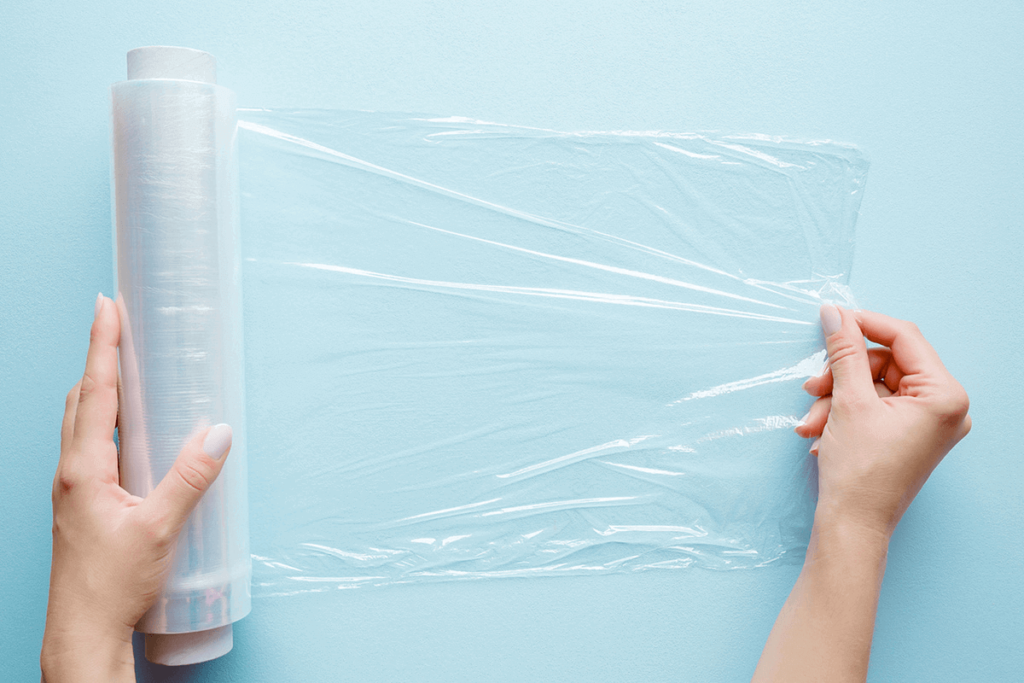
Pros
- It is cheap. The cling film is very affordable in terms of price, and it is also very easy to find it. It can be a great alternative if you are on a tight budget. For all its downsides, which we’ll talk about below, cling film can be an effective barrier between your fresh tattoo and germs.
Cons
- Not breathable. The main disadvantage of cling wrap is that it does not allow the skin to breathe as fully as the protective film does.
- Quite uncomfortable. The second big drawback of cling film is rigidity. It feels uncomfortable on the skin and may cause some discomfort to wear.
Anyway, these two films serve as effective protection against viruses, however, having tried the protective film once, you will not want to go back to cling wrap. Tattoo technology does not stand still and that’s great!
Is It Safe To Leave a Tattoo Bandage on Too Long?
Many people naively believe that leaving the bandage on for too long is a good idea, as it will protect the tattoo from bacteria for longer.
It works the other way around. It is not safe to leave the bandage on for long as it can lead to infections. If a lot of blood or plasma has accumulated inside the wrap, or if the wrap itself is damaged, be sure to change it regularly.
Moreover, keeping the bandage on for too long and not letting the skin “breathe” can lead not only to infections but also to longer healing due to the fact that the area with the tattoo is too wet. The moisture will prevent the skin from creating the new protective barrier that we are directly interested in.
What To Do After Uncovering a Tattoo
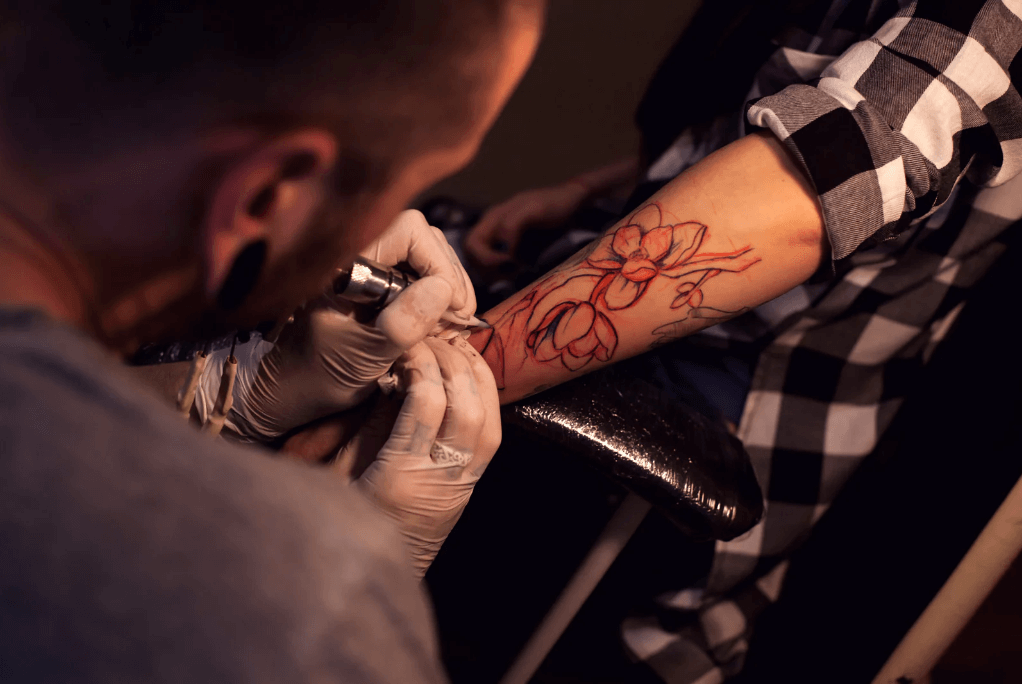
Once you have uncovered your tattoo, the crucial and responsible aftercare process begins. If you don’t care properly, you’re putting yourself at risk of infection, scarring, allergies, delayed healing, or design fading. Therefore, you need to take the following steps:
- Take a mild, unscented soap and wash the wound under warm water 2–3 times per day. Next, rinse thoroughly and pat dry with a dry towel.
- Immediately after the previous step, use a water-based ointment. You need to apply it 2–3 times a day for the first 3–4 days in a thin layer over the tattoo. It will keep your skin hydrated and prevent itching. Then, you can use an unscented moisturizer 2–3 times a day for two weeks.
- Avoid direct sunlight for at least 2–4 weeks, as ultraviolet light can cause the tattoo to fade. Also, wear loose clothing to protect the design from the sun so that the tattoo breathes and the skin is not irritated. If you can’t wear loose clothing, you can use a sunscreen of 30+ SPF, but you should consult your tattoo master or a dermatologist before applying it, as it can irritate the tattooed area.
- When you see scabs on the tattoo, do not tear off them, as scars will appear at the site of the wounds.
In general, the healing process will take two to four weeks. However, the skin will fully recover after a few months, so you should keep in touch with your tattoo artist so that, in case of negative consequences, you can ask for advice and take action.
Main Advantages of Wrapping the Tattoo

So what are the main benefits of wrapping your fresh tattoo?
1. Protects against bacteria and infections. This is the main purpose and advantage of wrapping, whichever type of film you choose. By securing the tattooed environment, you are protecting it from external germs.
2. Creates a safe environment for your tattoo. Since the picture is sterilized and moisturized with special products, the wrapper creates ideal conditions for healing.
3. Does not allow touching irritants. Bed linen, coarse clothing, and other items that the tattooed area could potentially interfere with are all unwanted irritants. The wrapping does not let us contact them directly and therefore speeds up a fresh wound to heal as quickly as possible.
Summary
Wrapping is an indispensable and major step in the healing of your fresh tattoo. To protect from infections in the area with the pattern, it is imperative to wear the wrapper for 2-4 hours if you use a simple cling wrap (plastic foil), and 3-5 days if it is a protective tattoo film.
In no case should you re-wrap the bandage yourself, since wherever you are, this place will not be sterile enough, like a tattoo parlor. If you see that a large amount of blood and plasma is collecting under the film, change the wrapping regularly with your master. After all, the beauty and health of your body art depend on simple rules that are not difficult to follow. Happy tattooing!
FAQ
⏳ How Long Should I Keep My Tattoo Covered With Cling Film?
After you leave the salon or your tattoo artist, you need to keep the tattoo wrapped for 2-4 hours if you use simple cling wrap (plastic foil). If you have a protective tattoo film, then keep it for 3-5 days.
🩹 Should I Keep My Tattoo Wrapped for 5 Days?
Yes, but only if you are using a protective tattoo film instead of simple cling wrap (plastic foil). Only protective film can be worn for 3-5 days.
🌜 Should I Cover My Tattoo When I Sleep?
You should keep the tattoo wrapped up the first night to protect the wound until a fresh layer of new skin appears in this place. To avoid unnecessary friction and adhesion due to the blood and plasma flowing from the wound, it is better to play it safe and wrap the tattoo for the night.
👕 Is It Ok To Wear Clothes Over a New Tattoo?
You can only wear clothing if it is loose and does not fit snugly against the tattooed area. The wound is incredibly sensitive for the first two weeks of healing, so don’t wear tight clothing to prevent it from interfering with the recovery process.

